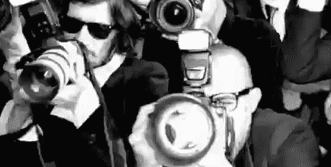Does the gender pay gap apply to freelancing too?
 Reports suggest female freelancers and contractors are still earning significantly less than their male counterparts
Reports suggest female freelancers and contractors are still earning significantly less than their male counterparts
By Jermaine Haughton
Full-time permanent staff are often the primary focus of the debates surrounding the gender pay gap. They are the basis for UK legislation requiring large businesses to report how much they pay their male and female employees.
READ MORE: CMI’s GUIDE TO GENDER PAY GAP REPORTINGHowever, there are calls for similar investigations into the pay of freelance workers. Independent workers form an expanding part of today’s labour force, growing by 25% since 2009 and contributing an estimated £109 billion a year, according to independent workers membership body IPSE. There are a reported 1.9 million freelance workers in the UK. Furthermore, women are a major part of the freelance world, making up 97% of the net increase in self-employed workers last year, the Pensions Policy Institute reports.
FREELANCE WORKERS – THE PAY GAP
It has been said that flexible working could reduce the gender pay gap.
READ MORE: FLEXIBLE WORKING AS THE KEY TO EQUAL PAYStudies suggest the gender pay gap experienced by staffers is also endured by freelancers, especially those in knowledge-based sectors such as marketing, entertainment and technology.
Research by jobs platform YunoJuno found men in the creative industries have an average day rate of £319, which is £15 more than women were paid on average. Although female freelancer renumeration ranked higher across strategy and client services roles, the study found women were usurped by as much as £50 a day by men in most other creative disciplines, including design, user experience (UX) and film production.
ZERO HOURS CONTRACTS
Outside of the knowledge industries, the rise of the zero hour contract has also had a damning impact on female pay, studies suggest. Zero hour contracts are most likely to be used in low paying, female-dominated industries such as health, social work, retail and hospitality, meaning that women make up around 58% of zero hour contract employees, according to the ONS. Analysis by the Trades Union Congress (TUC) found female agency workers earned £80 a week less on average than men in equivalent roles, while female temporary workers earn £60 a week less.
THE IMPACT OF A GENDER PAY GAP
In January 2018, fourteen women gave written testimonies based on their experiences of pay negotiations at the BBC ahead of a Parliamentary Select Committee hearing about the gender pay gap at the Corporation.
One female sports broadcaster expressed the frustrations of trying to achieve fair renumeration as a freelancer. She said: “I have worked for the BBC for almost 30 years, both staff and freelance. I present major sports coverage on national radio. In 2017 my contract was worth £19,000 for 50 days, reporting and presenting. This is an average day rate of £380. When I present one of the flagship radio sports programmes I am paid £500. I have been told the male presenter is paid £1,200.
“Since raising the issue of equal pay I have been offered £650 which is still a long way short of equal pay. What you are worth is solely at the whim of management who essentially in sport are always men. I'm at the top of my game, knowledgeable and with three decades of experience, yet I'm scratching around to earn a living.”
FREELANCE PAY IMPROVEMENTS
However, research released on Equal Pay Day in 2017 suggests the gender pay gap for UK freelancers and self-employed is narrowing rapidly. According to data collated by online services platform Bidvine, the last 12 months saw the gender pay gap to just an average of 1.9%. In sectors like photography, music teaching and language tuition, women competing for freelance and self-employed opportunities earned more than men, and won more jobs.
Meanwhile, in the area of wedding photography, a gender pay gap of 4.5% in favour of women existed. Self-employed female wedding photographers earned £680 per wedding on average, whereas male photographers earned just £650. The study showed the music teaching industry as the only self-employed job category with a completely non-existent gender pay gap. Both male and female self-employed music teachers earnt £28 per hour on average in the last year.
The Key Issues
Although many of the underlying causes of the salaried worker gender pay gap also apply to self-employment, there are other factors at play that are harder to measure.
FREELANCE GENDER PAY GAP CAUSES
Press & Media Enquiries
For more information or to request interviews, contact CMI's Press Team on 020 7421 2705 or email press.office@managers.org.uk


